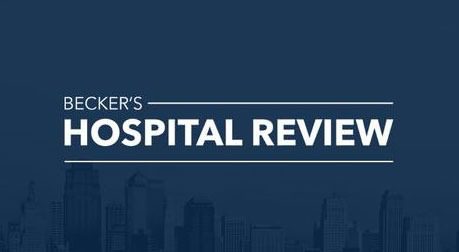
Medical school in 2025: 3 trends to know – Becker’s Hospital Review | Healthcare News
The medical school landscape is shifting this year in response to federal pressures and new demands in the healthcare space.
Here are some of the top trends to know in 2025:
Federal changes impacting schools
This year, medical school funding has made national headlines after several funding bills were proposed by the Trump administration. These included a 15% cap on indirect cost rates proposed in February, and the One Big Beautiful Bill, signed into law July 4, which capped medical school loans.
The cuts and caps have put many medical schools in a tight spot. In March, the Morningside Graduate School of Biomedical Sciences at Worcester, Mass.-based UMass Chan Medical School rescinded dozens of provisional acceptance offers to PhD applicants due to concerns over biomedical research funding stability. At Baltimore-based Johns Hopkins University, the termination of more than $800 million in USAID funding has resulted in 1,975 job losses in 44 countries, 247 U.S. layoffs and 107 international and domestic furloughs.
Student loan caps have some leaders concerned about access to medical school for rising students. President Trump’s One Big Beautiful Bill was signed into law July 4. Effective July 1, 2026, the maximum amount a medical student can borrow from Federal Direct Unsubsidized Stafford loans will be $200,000. The law will also terminate graduate and professional PLUS loans, which covered graduate students’ tuition and living expenses after finishing their direct loans.
Medical school debt has been a long-standing part of education. Students who graduated from U.S. medical schools in 2024 left with an average of $212,341 in educational debt, according to the latest data from the Association of American Medical Colleges. The school with the highest average student debt upon graduation was New Orleans-based Tulane University School of Medicine at $317,890, compared to the lowest at University of Houston Tilman J. Fertitta Family College of Medicine, where students completed school with an average debt of $33,993.
Before the OBBB, several medical schools were waiving tuition fees to make medical school more accessible, such as Bentonville, Ark.-based Alice L. Walton School of Medicine, which is waiving tuition for its first five cohorts of students, and New York City-based NYU Grossman School of Medicine’s three-year program.
Medical schools eye big changes
Regardless of federal changes, medical schools are making big changes to their programs and curricula to meet the shifting needs and demands of the healthcare field.
Currently, about 30 medical schools in the nation offer an accelerated 3-year degree program, and more universities are following suit. Three-year programs allow physicians to graduate quicker, with less debt and have no significant difference in competencies compared to those who attend a traditional 4-year program, a February study from NYU Grossman School of Medicine found.
So far this year, two medical schools in Arizona have opened three-year pathways: the University of Arizona College of Medicine—Tucson and the University of Arizona College of Medicine—Phoenix.
In recent years, there has also been growing interest in dual programs where students can earn combined bachelor’s, master’s and PhD degrees along with their MD, according to an Association of American Medical Colleges report. About 9% of all medical students are pursuing a dual degree. The most common dual programs are MD-MPH, MD-PhD and MD-MBA. However, some schools offer dual degrees in medicine and health informatics, artificial intelligence, healthcare administration, mass communication, international administration and sciences like biomedicine.
Demand continues to increase. For example, Los Angeles-based Keck School of Medicine of the University of Southern California found a 434% increase in the number of students pursuing dual MD-MPH degrees from 2010 to 2018. To meet this rising demand, several schools have opened dual programs this year. This includes the Kaiser Permanente Bernard J. Tyson School of Medicine in Pasadena, Calif., which partnered with the Pepperdine Graziadio Business School in Los Angeles to launch an integrated MD/MBA program; and Lakewood, N.J.-based Georgian Court University and Freeport, Bahamas-based Western Atlantic University School of Medicine, which partnered to create an accelerated combined bachelor’s/MD program.
Medical schools have also been eying changes to their curriculum and education tracks. This has ranged from providing institutionwide access to ChatGPT Edu — a secure version of the tool designed for universities — at the Icahn School of Medicine at Mount Sinai in New York City all the way to creating new nontraditional curriculum.
The newly opened Charlotte, N.C.-based Wake Forest University School of Medicine has centered its curriculum on real-life clinical scenarios, rather than traditional lectures. Students begin seeing patients at Atrium Health’s Carolinas Medical Center on day one, and learn about the human body through virtual touchscreens and high-fidelity manikins.
Some medical schools are also moving away from the normal rotations and giving medical students experiences using ambulance rides, autopsy suites, prisons, culinary medicine kitchens, organ procurement trips and aircraft crash simulations. NASA even offers an aerospace medicine clerkship, which provides students the opportunity to experience zero gravity as they study space medicine for four weeks.
In most cases, changes to medical schools are coming from within the institution, but this year, some state legislatures are considering bills that would require medical schools to use A-F grading systems instead of pass-fail.
Indiana and Texas are considering SB 289 and HB 5294, respectively, both of which would eliminate pass/fail grading for medical schools and all allied health education programs, including nursing and dentistry. Currently, about 12 out of 155 medical schools in the nation use traditional A-F grading systems. The Texas American Federation of Teachers opposes the change, calling it counterproductive to medical student mental health.
New medical schools and expansions
Despite uncertainties and challenges, medical schools are still expanding, and four new medical schools are opening in 2025. Expansions and openings include:
- Worcester, Mass.-based UMass Chan Medical School expanded its endoscopy center in Southborough, Mass.
- Albuquerque-based University of New Mexico is planning a $600 million expansion of its medical school. The expansion will add a new on-campus facility, hundreds of hospital beds and staff positions, and nearly double the number of students in the next 10 years.
- Maryland is about to celebrate the opening of its first new medical school in 100 years; it is slated to open this fall. The Meritus School of Osteopathic Medicine in Hagerstown, Md., will be a four-year school with 90 medical students in its first class. Future classes are expected to have 180 students.
- Charlotte, N.C.’s first four-year medical school opened in June and welcomed its first class of 49 students in July. The school is a part of The Pearl, Charlotte’s 20-acre, $1.5 billion medical innovation district made in a public-private partnership between Charlotte-based Atrium Health and Wexford Science & Technology in Baltimore.
- Tucson-based University of Arizona will offer a new undergraduate degree focused on the medical device industry. The Bachelor of Science in Medical Device Development and Application will be based in the College of Medicine, with enrollment set to start in spring 2026.
- New Haven, Conn.-based Yale School of Medicine, the medical school of Yale University, has established the Yale Biomedical Imaging Institute to advance biomedical imaging research. The institute will leverage AI and data science to develop novel biomedical imaging technologies while translating those developments to guide diagnostics and therapeutics.
- Illinois College of Osteopathic Medicine is the first medical school to open in the city in 100 years — and will begin classes in fall 2026. The school, which is also the first-ever osteopathic medical school in Chicago, is being constructed in a former Tyson Foods building for about $48 million.
- York, Pa.-based WellSpan Health and Philadelphia-based Temple University’s Lewis Katz School of Medicine have entered a formalized agreement to open a second regional campus for the school.



